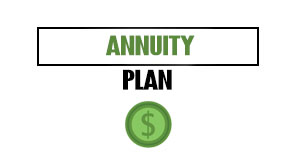Founders are known for hustling. Sadly, that sometimes comes with a price. Founders told Sifted they are “overworked,” “exhausted,” and “broken.” (HINT: Don’t start saying this to yourself.) In particular, 55% stated they had insomnia in the past year, and 53% had burnout. The result was that 61% of respondents said they had considered leaving their company, while 49% said they were considering doing so soon.
But it doesn’t have to be this way. You can reduce burnout and improve output by using priority-based calendar management.
Table of Contents
ToggleThe Overwork Trap That’s Costing You More Than Time
Hustle is the hallmark of entrepreneurship. Many founders, however, are caught in a paradox: they’re working more, but accomplishing less, somewhere between the all-nighters and endless Zoom calls.
Here’s the thing, though. It’s not a badge of honor to burn out. This is a warning sign. Many times, the problem lies not in a lack of passion or drive but in poor calendar management.
If you’re experiencing reactive chaos, it’s time to shift to intentional control. The key? Scheduling based on priorities, not availability.
Why Traditional Time Management Falls Short
There is no shortage of timers, to-do lists, and apps that block time. However, tools alone won’t save you. Without a calendar that reflects your priorities, you’ll continue to focus on what’s urgent instead of what’s important.
Rather than focusing on what drives results, most entrepreneurs schedule their days according to incoming requests, such as meetings, emails, and client calls.
For many, what gets scheduled gets done. However, if you fill your calendar with other people’s priorities, you’re building their business, not yours.
Enter Priority-Based Calendar Management
With priority-based scheduling, the script is flipped. Instead of asking, “What do I have time for?” you ask, “What deserves my time?”
The goal isn’t to do more. It’s about doing what’s essential. As a result of adopting this approach, you reap the following benefits;
- Decision fatigue is reduced.
- Every week, you gain back hours.
- The less stress you have, the better you perform.
- By planning your day intentionally, you avoid burnout.
Now, let’s take a look at how it can be implemented.
Step 1: Identify Your “Vital Few”
Let’s begin with the 80/20 rule. You get 80% of your results from 20% of your activities. First, you must identify those high-leverage tasks.
For most founders, they fall into categories like;
- Revenue generation, think sales, partnerships, product development
- Team growth and culture
- Strategic thinking and planning
- Personal energy management, such as sleep, exercise, or reflection
These are your vital few. The rest is noise or support. Once you know what moves the needle, block time for it.
Step 2: Time-Block with Ruthless Intention
Don’t fill your week with meetings, emails, or phone calls. Put non-negotiable blocks around your high-priority activities.
For example:
- Mornings (deep work): 8:00–11:00 a.m. reserved for strategic projects or creation.
- Midday (meetings): 12:00–3:00 p.m. set aside for external calls or internal syncs.
- Afternoons (admin): 3:00–5:00 p.m. for email triage or low-focus tasks.
Whenever you’re deep in work, be as careful as you would when meeting an investor. Also, make sure you don’t give it away casually. And, when possible, reschedule things intentionally, not reactively.
Step 3: Stack and Batch Low-Value Tasks
Make no mistake about it. Context switching kills productivity. By grouping similar tasks into dedicated blocks, you will avoid jumping between tasks all day.
- Every day, batch your emails into two 30-minute sessions.
- On the same day, schedule all internal check-ins.
- Friday afternoons can be used for admin catch-up or finances.
In addition to saving time, this also keeps your mind from being scattered. With time, your team and clients learn to work around your schedule, rather than trying to control it.
Step 4: Build Buffer Time into Your Day
You might feel productive after back-to-back meetings, but you’ll feel drained soon afterward. A smart schedule includes white space — the unscheduled gaps between tasks.
Using 15-minute buffers, you can:
- Decompress
- Capture meeting takeaways
- Refocus and recharge before your next task
By taking short breaks throughout the day, you reduce stress and give your brain the reset it needs.
Step 5: Reassess Weekly — What’s Working?
Spend 10 minutes reviewing your week every Friday (or Sunday evening). Then ask:
- Is there anything I did that truly moved the business forward?
- Did anything drain you or feel wasteful?
- What needs to be prioritized more?
You can then adjust your calendar for the following week. Remember, this is a living system, not a one-time fix.
The Financial Cost of Poor Scheduling
Burnout affects more than just your health. It affects your bottom line, too.
- Missed revenue opportunities. It’s hard to make strategic decisions when you’re too busy reacting.
- Low-leverage labor. The time you spend on tasks that can be delegated costs you hundreds, if not thousands, per week.
- Attrition. An overworked founder leads to an overworked team. It’s impossible to scale a burnt-out culture.
With better time management, you can reduce waste, improve clarity, and make room for high-impact projects.
What Balance Really Looks Like for Founders
Work-life balance doesn’t mean working less. It’s about working smarter, with intention so that you can unplug guilt-free.
Having a clear understanding of your priorities and a calendar that reflects them will help you:
- Suddenly, you don’t feel like you’re always behind.
- Your decision-making becomes faster and more confident.
- The room you create allows you to rest, be creative, and grow as a person.
There’s nothing soft about this; it’s all about strategy. When founders protect their time, they protect their focus. And focus is a multiplier.
Final Thought: Start With One Change
The perfect system doesn’t have to be created overnight. Set aside just one hour per day for deep, uninterrupted work. Alternatively, you can schedule your meetings in fewer days.
From there, you can build.
You should value your time as your most valuable asset, not just as a resource. The way you schedule it will determine how well your business (and your life) runs.
Having a smart schedule doesn’t mean restricting yourself. Ultimately, it’s about liberation. Without losing your edge, you’ll go from burnout to balance.
Image Credit: Photo by Nataliya Vaikevich; Pexels















